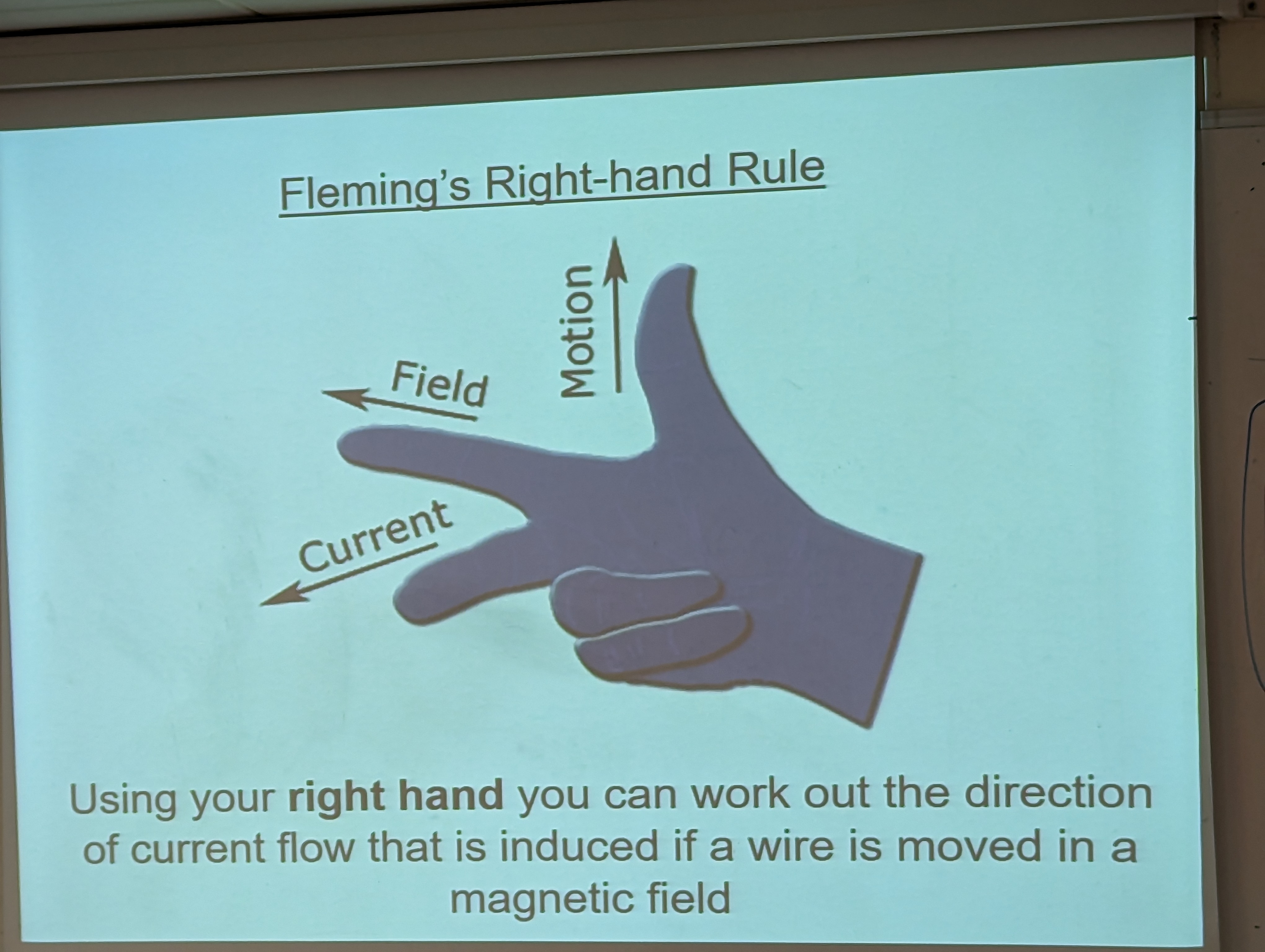Electromagnetic Induction
The three components of electricity
- Motion
- Magnetic Field
- Conductor
Flemings Right Hand Rule

EM Induction
- Electromagnetic Induction means that an emf (electromagnetic flux) is created when a wire is passed through a magnetic field.
- If the wire is part of a complete circuit, then the emf will create a current flow in the wire.
- The emf can be increased by using a stronger magnet, a coil of wire or moving the wire faster. (also make sure perpendicular to magnetic field)
Using a dynamo
- A dynamo contains a magnet that spins within a coil of wire.
- This induces an emf in the coil which in turn can produce a current.
Lenz's Law
- When you push a magnet into a coil of wire, it creates a current in the wire.
- The current in turn creates a magnetic field (the coil becomes a solenoid)
Magnetic Flux
Magnetic Flux Density (B) can be thought of as the strength of a magnetic field
If you multiply this by a known area (A) of a field then you get the Magnetic Flux \(\Phi\)
\[\Phi=BA\]
Calculating emf
\[\varepsilon=\frac{W}{Q}=\frac{BIl\Delta s}{I \Delta t}=\frac{Bl\Delta s}{\Delta t}=\frac{BA}{\Delta t}=\frac{\Phi}{\Delta t}\]
Faraday's Law of Electromagnetic Induction
"The induced emf in a circuit is equal to the rate of change of flux linkage throughout the circuit."
\(\(\varepsilon=-N\frac{\Delta\phi}{\Delta t}\)\)